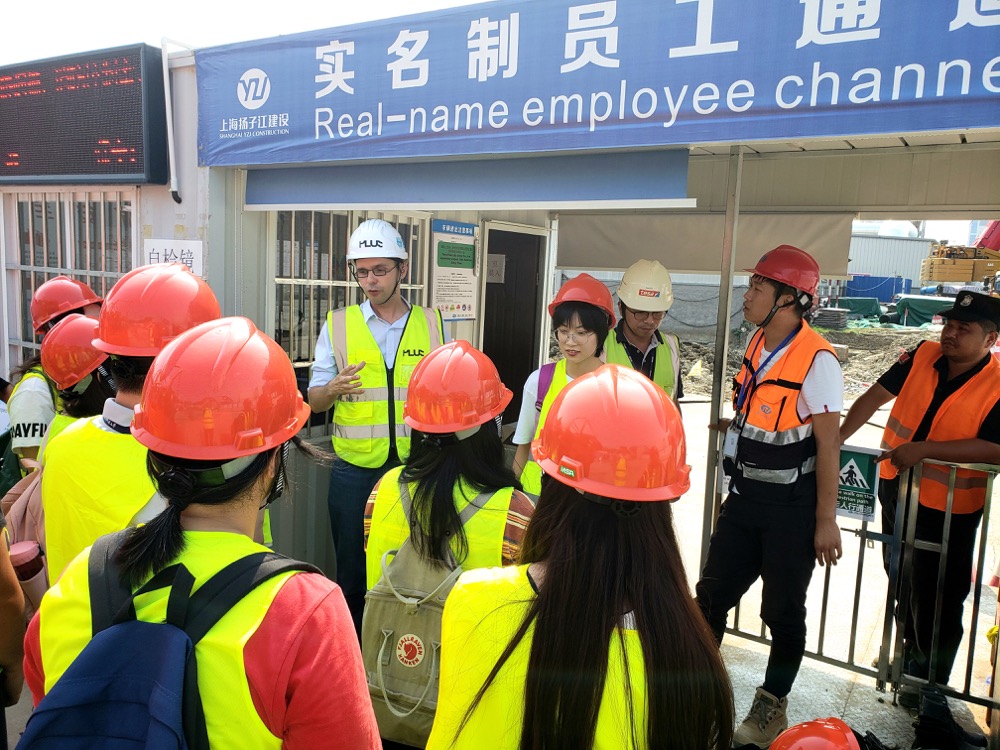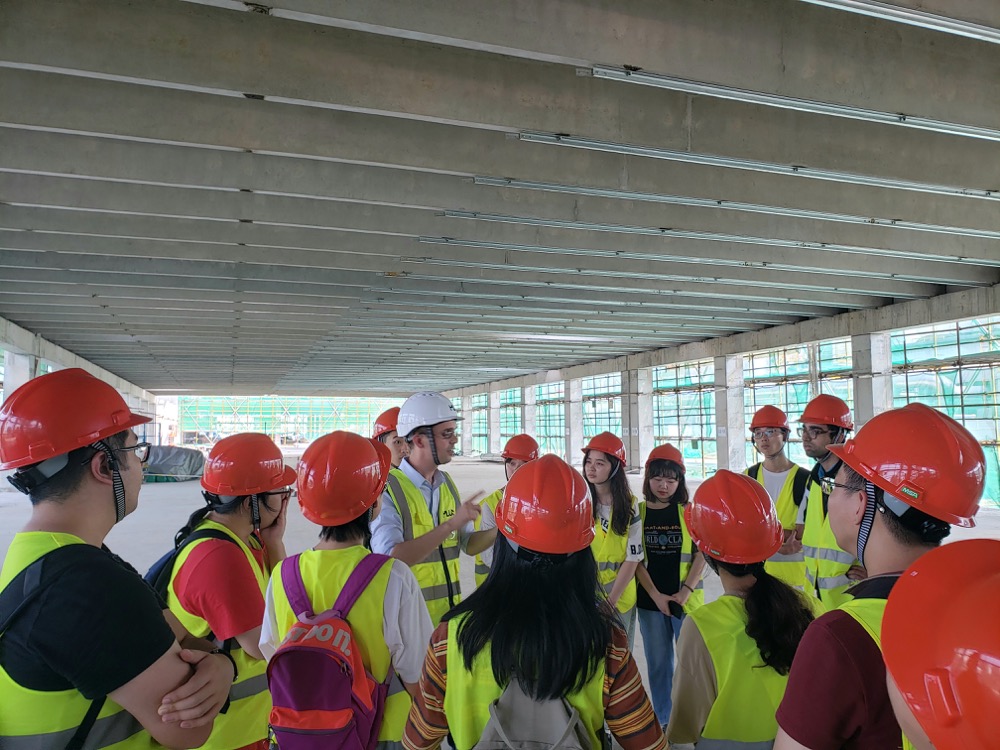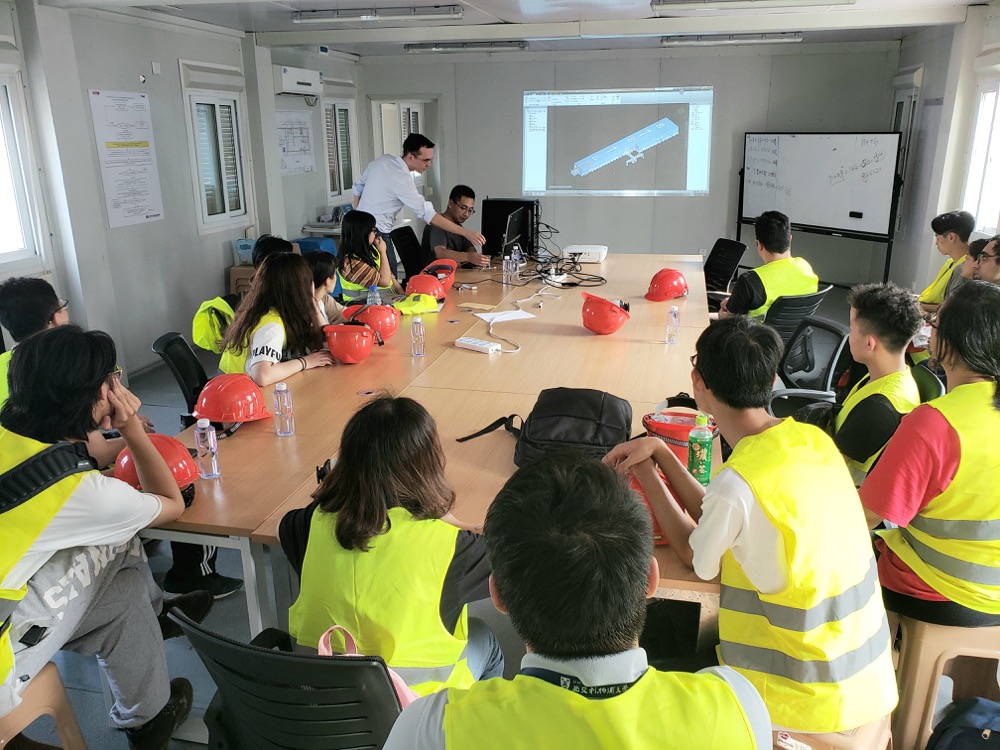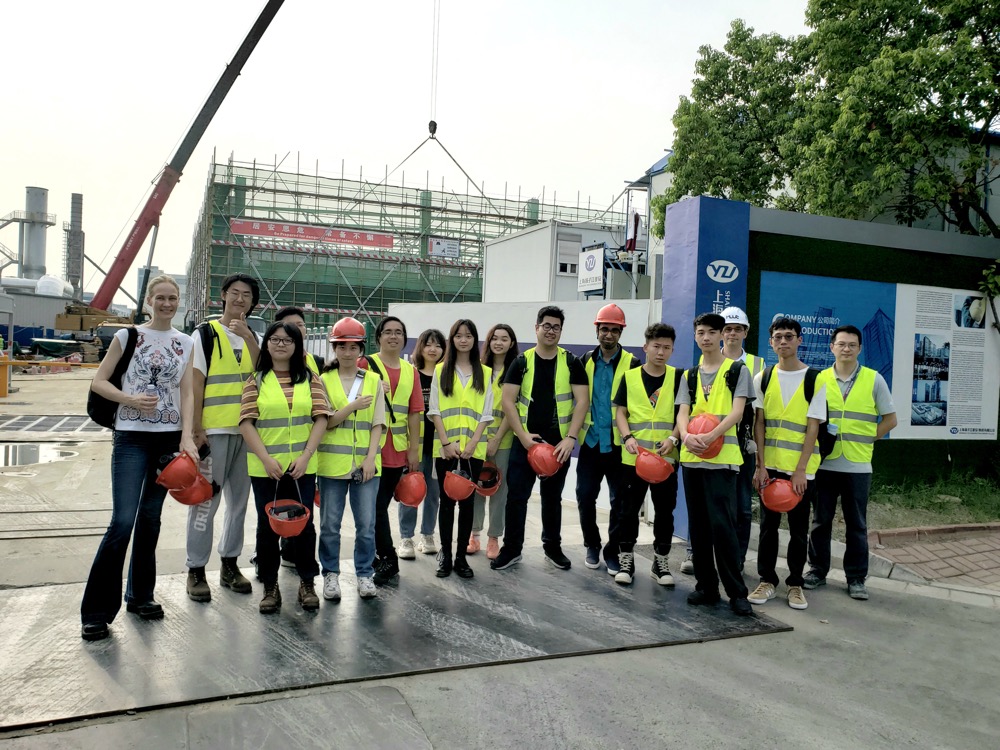23 Sep 2019
The close integration of architectural design, advanced construction methods and close collaboration among a team involving several professional backgrounds is a key contemporary challenge for China’s construction industry. To learn from a live example of integrated building design, thirteen Year 2 students of the Bachelor of Architectural Engineering programme visited the construction site of the new tesa lab & production building in Suzhou Industrial Park.

Safety Briefing by Bart Mahieu, PLUS office
Guided around the construction site by project architect Bart Mahieu of PLUS office, students were introduced to various aspects of high quality industrial building construction, made possible by a firm dedication to quality from the client side. Stefan Detterbeck, managing the project from the client side at tesa, emphasized the role of integration and communication across the entire project team to achieve the desired outcomes.

Listening to detailed explanations from the architect and site engineers
Walking around the site, students were introduced to a first for prefabricated industrial building construction in SIP: the second floor of the main factory building with a 21 meter span in the form of a series of long-span precast and prestressed, high strength double T beams. “The design of precast beams and steel roof frames in this project considers the future installation of ducts and lighting equipment, which is a truly integrated effort from the architects, structural engineers, and building service engineers,” explained Dr. Jun Xia (夏骏), Programme Director of Architectural Engineering.

Demonstration of the project BIM model to support integrated construction
Not only the factory building materials are setting new standards: the tesa site is also a good example of project control and risk management. Face recognition is required for all workers on site at the entrance gate, and all warning signs are written in both English and Chinese languages considering the diverse community involved in the project. “The site visit demonstrates to students how contemporary construction work is executed to meet the high quality standards of the client,” emphasized Dr. Jun Xia.

Participating Year 2 students of Architectural Engineering with staff of the Departments of Architecture and Engineering
“Students always learn best when they are able to see the immediate relevance of what is learned. For this reason, site visits are not only exciting for students but also a very effective teaching strategy. With its location in Suzhou Industrial Park, XJTLU is perfectly located to make learning from direct observation a regular feature of architectural engineering teaching” concluded Dr. Christiane Herr, site visit organizer.
23 Sep 2019




